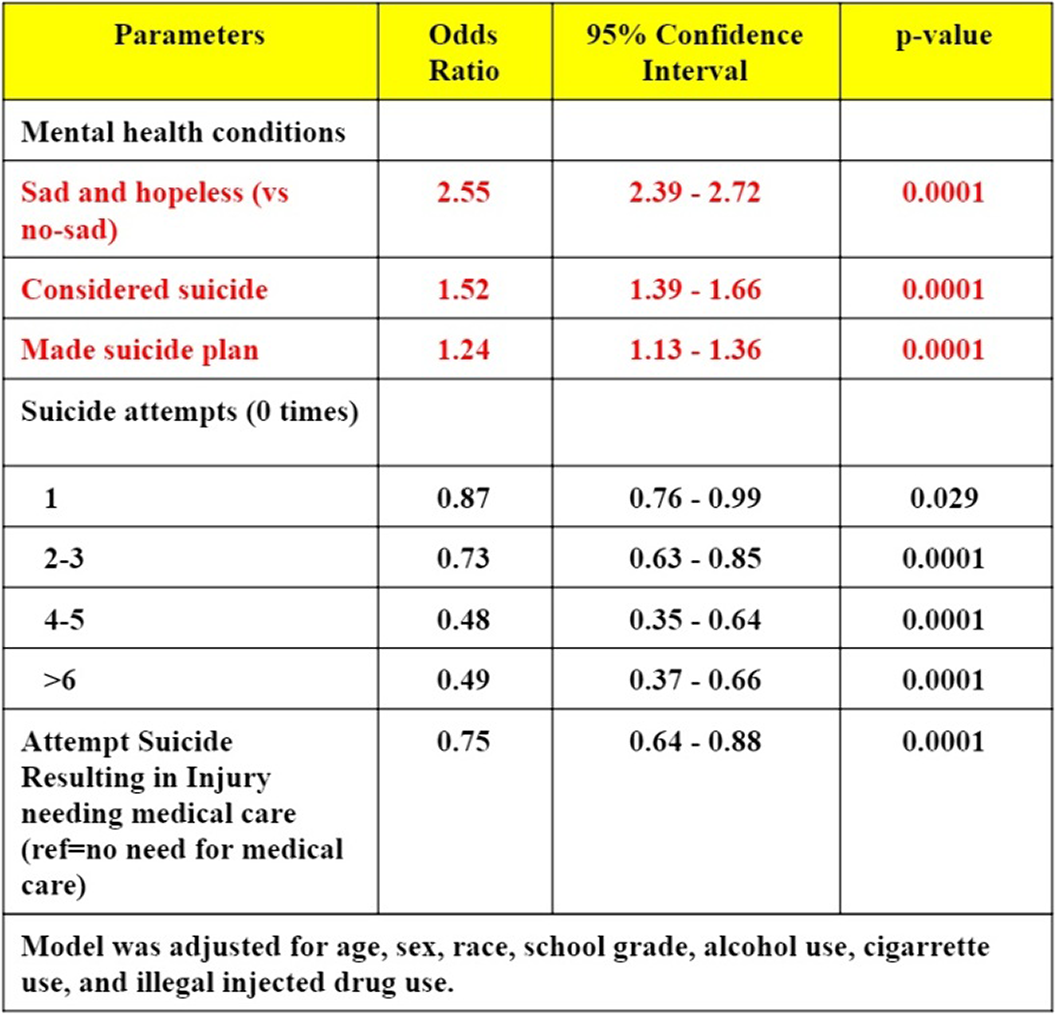Article contents
Mood and suicidality amongst cyberbullied adolescents- a cross-sectional study from youth risk behavior survey
Published online by Cambridge University Press: 13 August 2021
Abstract
There is a limited literature available showing mental health burden among adolescents following cyberbullying.
Aim is to evaluate the association of low mood and suicidality amongst cyberbullied adolescents.
A study on CDC National Youth Risk Behavior Surveillance (YRBS) (1991-2017). Responses from adolescence related to cyberbullying and suicidality were evaluated. Chi-square and mix-effect multivariable logistic regression analysis was performed to find out the association of cyberbullying with sadness/hopelessness, suicide consideration, plan, and attempts.
A total of 10,463 adolescents, 14.8% of adolescents faced cyberbullying a past year. There was a higher prevalence of cyberbullying in youths aged 15-17 years (25 vs 26 vs 23%), which included more females to males (68 vs 32%).(p<0.0001) Caucasians (53%) had the highest number of responses to being cyberbullied compared to Hispanics (24%), African Americans (11%).(p<0.0001) There was an increased prevalence of cyberbullied youths with feelings of sadness/hopelessness (59.6 vs 25.8%), higher numbers considering suicide (40.4 vs 13.2%), suicide plan (33.2 vs 10.8%), and multiple suicidal attempts in comparison to non-cyberbullied.(p<0.0001) On regression analysis, cyberbullied adolescence had a 155% higher chance of feeling sad and hopeless [aOR=2.55; 95%CI=2.39-2.72], considered suicide [1.52 (1.39-1.66)], and suicide plan [1.24 (1.13-1.36)].
In our study, cyberbullying was associated with negative mental health outcomes. Further research is warranted to examine the impact and outcomes of cyberbullying amongst adolescents and guiding the policies to mitigate the consequences.
No significant relationships.
- Type
- Abstract
- Information
- European Psychiatry , Volume 64 , Special Issue S1: Abstracts of the 29th European Congress of Psychiatry , April 2021 , pp. S85 - S86
- Creative Commons
- This is an Open Access article, distributed under the terms of the Creative Commons Attribution licence (http://creativecommons.org/licenses/by/4.0/), which permits unrestricted re-use, distribution, and reproduction in any medium, provided the original work is properly cited.
- Copyright
- © The Author(s), 2021. Published by Cambridge University Press on behalf of the European Psychiatric Association
- 1
- Cited by



Comments
No Comments have been published for this article.